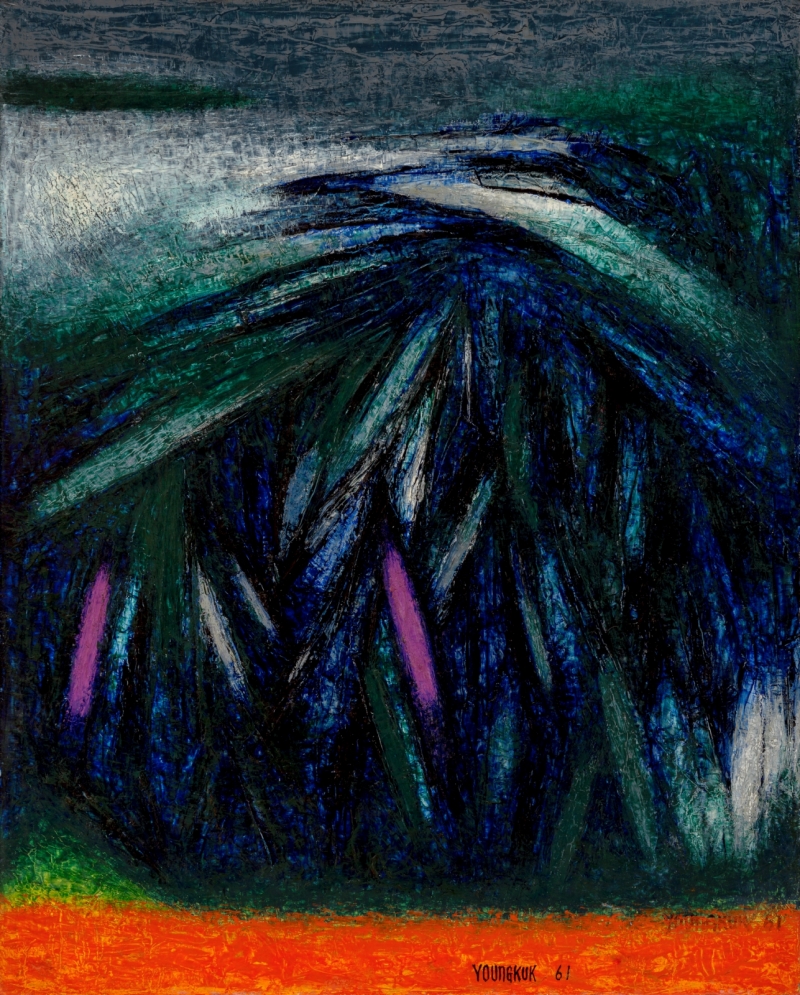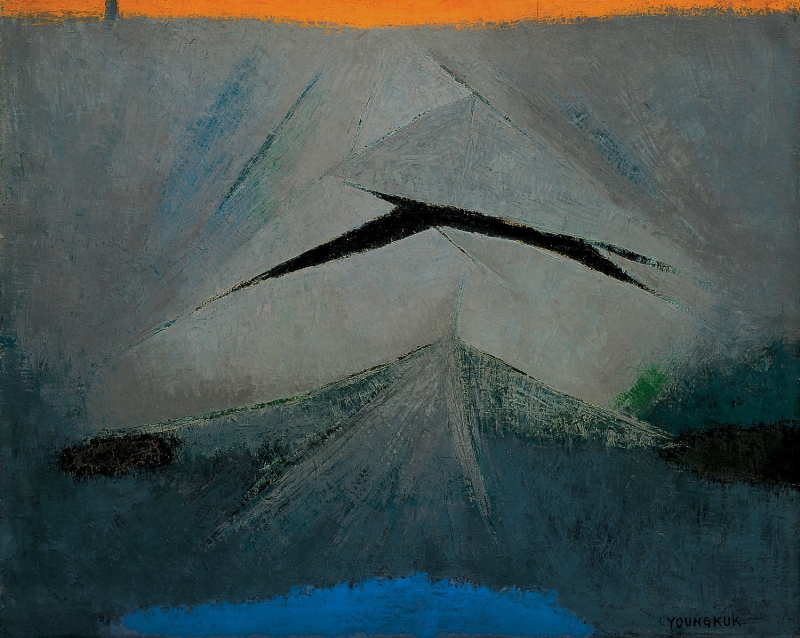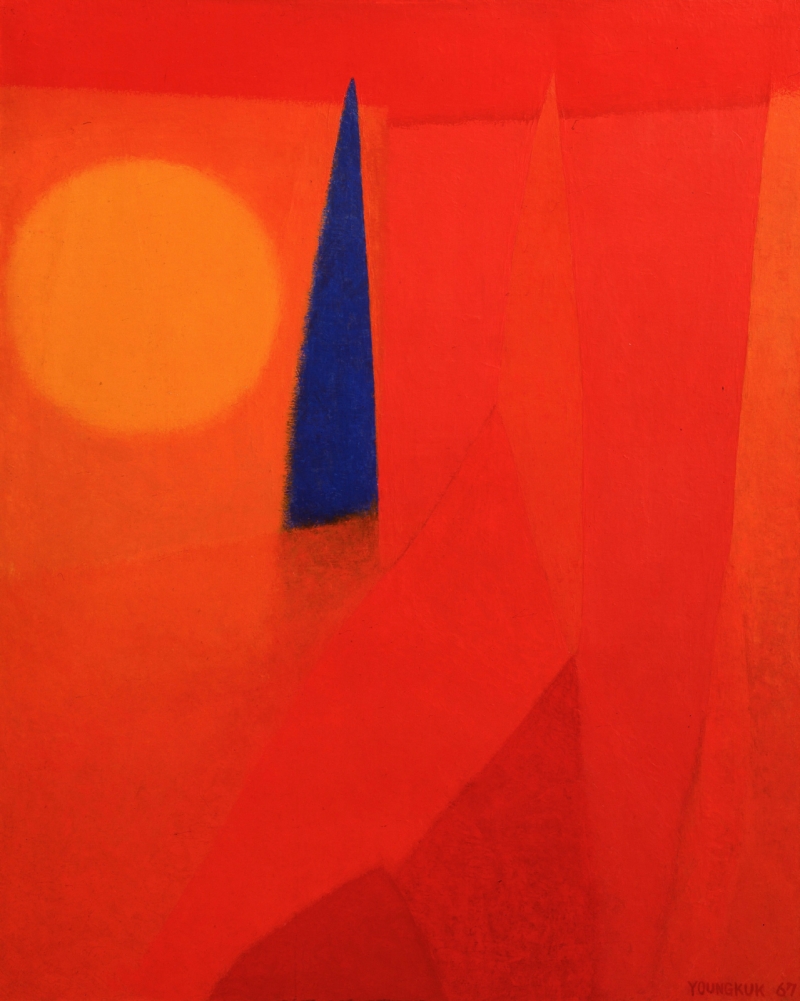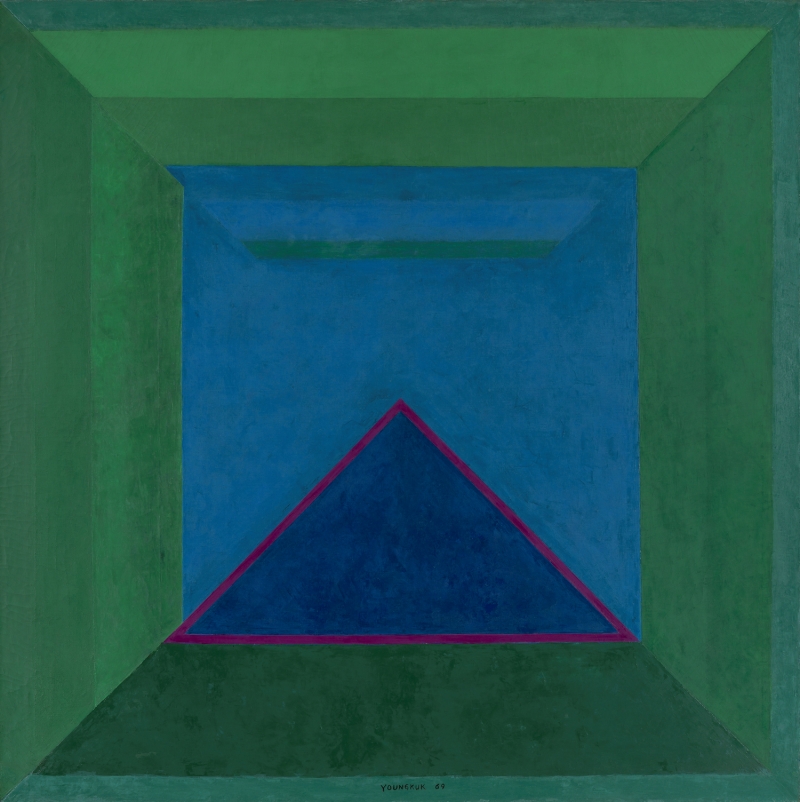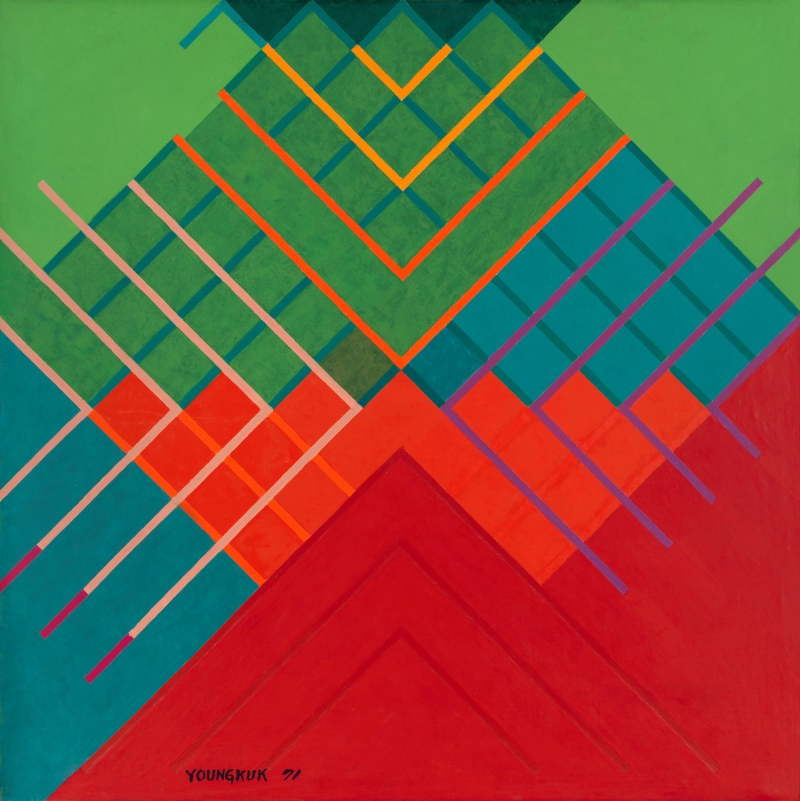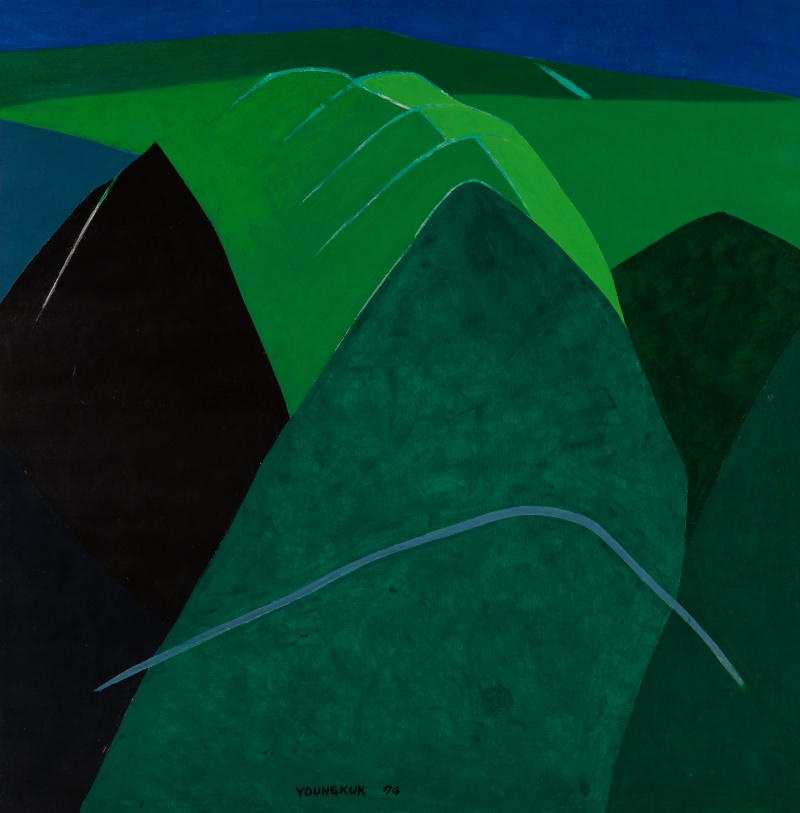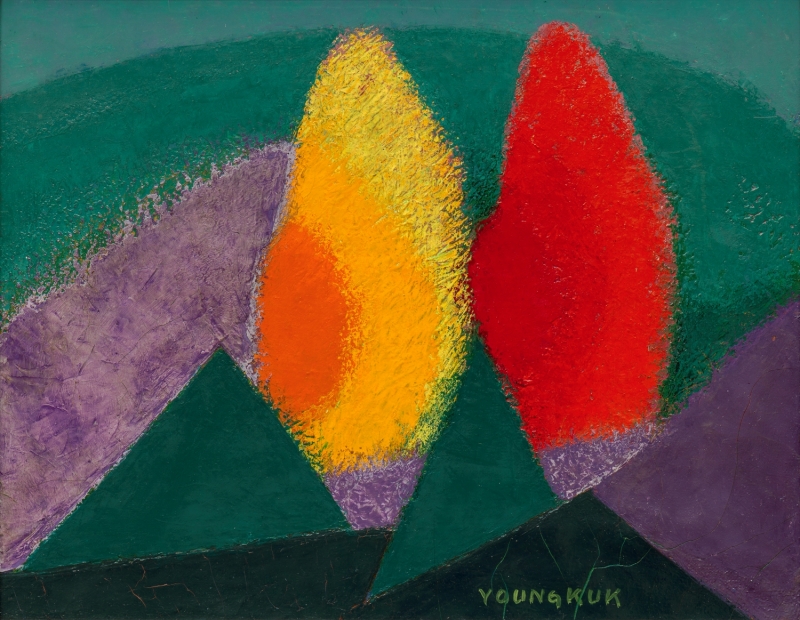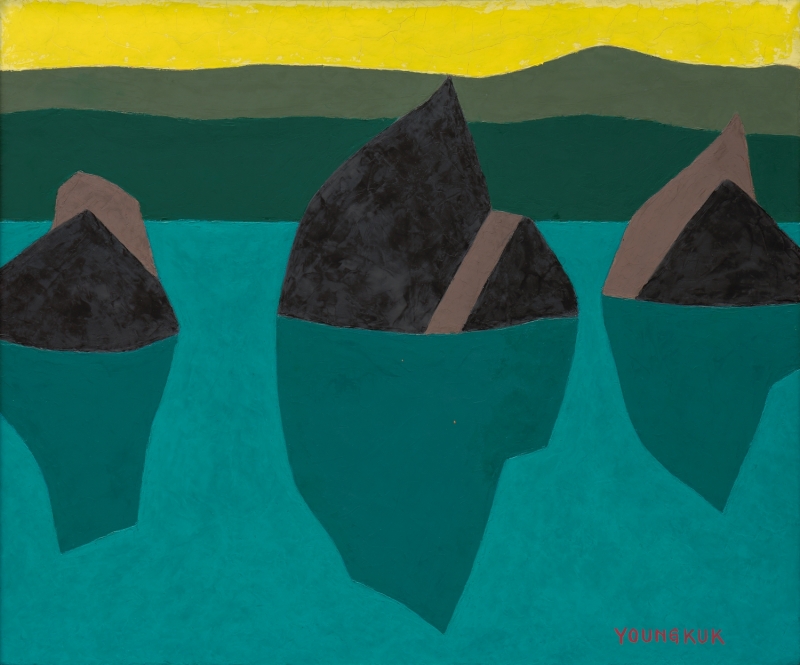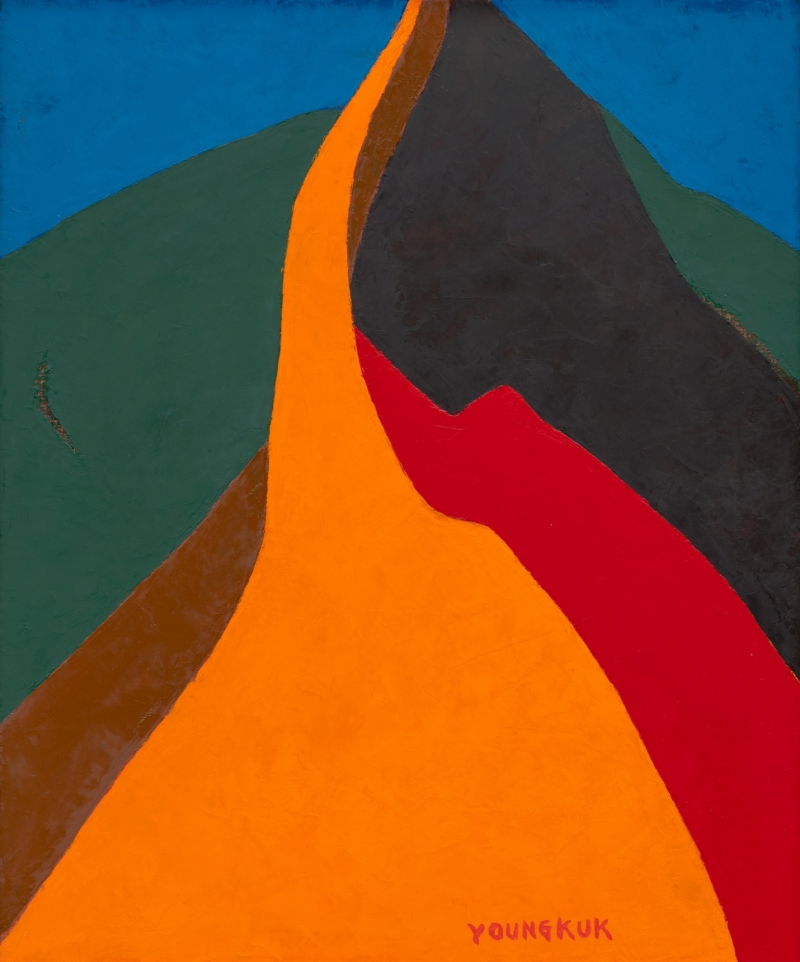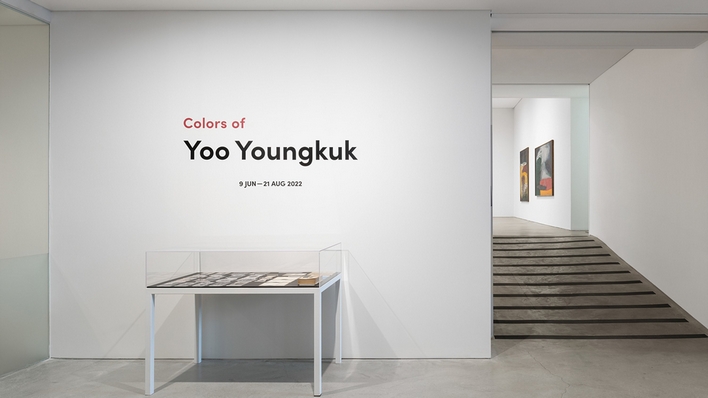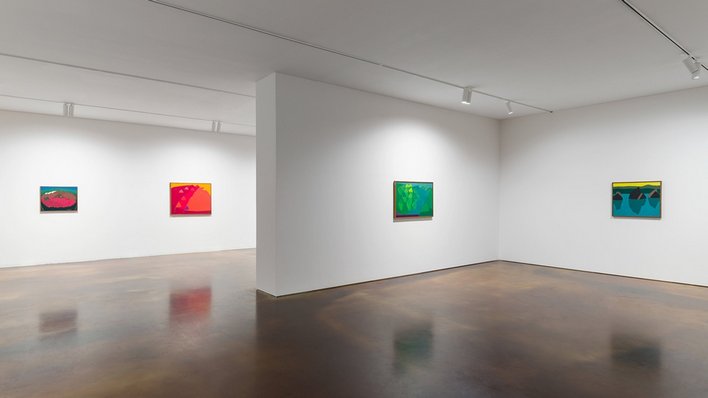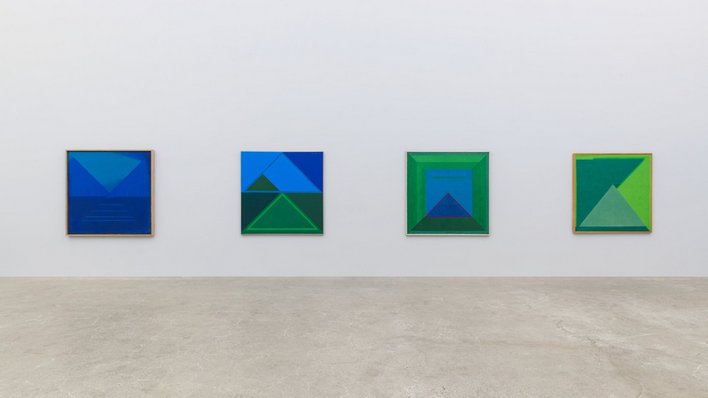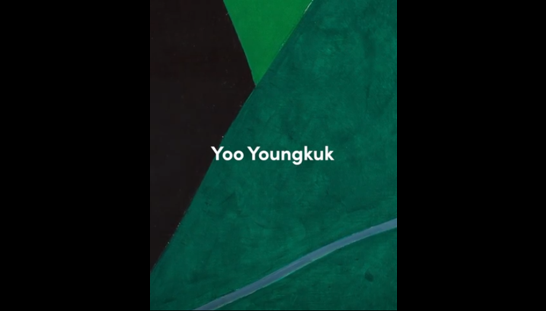 Colors of Yoo Youngkuk | KUKJE GALLERY
Colors of Yoo Youngkuk | KUKJE GALLERY
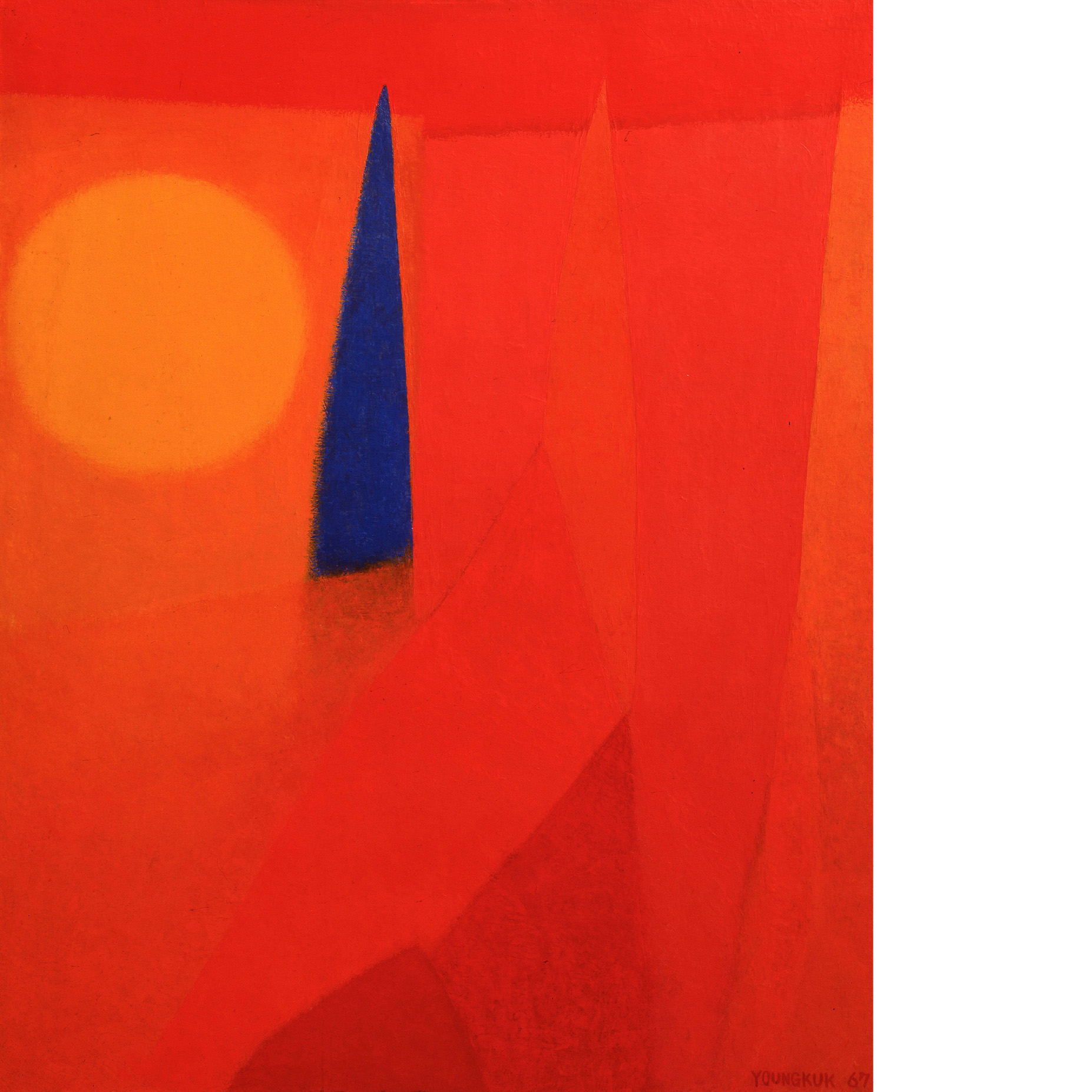
Jun 9, 2022 - Aug 21, 2022
INTRODUCTION
– Yoo Youngkuk
Kukje Gallery is pleased to present Colors of Yoo Youngkuk, the 20th memorial exhibition of the pioneering Korean abstract painter Yoo Youngkuk from June 9 to August 21, installed across all three of the gallery’s spaces (K1, K2, K3) in Seoul. Commemorating the 20th anniversary of Yoo’s death, this is the artist’s second exhibition with Kukje Gallery following Colors from Nature in 2018 and surveys his entire artistic oeuvre, with an emphasis on Yoo’s lasting legacy of abstract and formal experimentation. Highlighting multiple stages of the artist’s career, the exhibition is comprised of 68 paintings that present iconic examples from each period of his life; in addition, it will include 21 drawings and archives of ephemera documenting Yoo’s artistic activities, including photographs taken by the artist in 1942 that underscore his interest in photography to develop new abstract methods and vocabularies.
Yoo Youngkuk was born in Uljin-gun (present-day North Gyeongsang-do) in 1916, amidst the turbulence of modern and contemporary Korean history, and first encountered abstract art when he was admitted into the Tokyo Institute of Culture (Tokyo Bunka Gakuen), the cultural center of Imperial Japan. There, he quickly discovered and acquainted himself with some of the most current avant-garde art movements of the 20th century—namely surrealism and abstraction—becoming deeply involved with Japanese abstract artists. These included Masanari Murai and Saburo Hasegawa, who were at the forefront of the avant-garde scene, as well as avant-garde groups including the Association of Free Artists, the Independent Art Association, and the Neo Beaux-Arts Group. As Imperial Japan aggressively propagated the Greater East Asia Co-Prosperity Sphere at the outbreak of the Asia-Pacific War in 1941, reinforcing the empire’s military policies and actively suppressing avant-garde groups, Yoo Youngkuk did not cease to hone his craft, embarking on a series of collage works featuring stone statues of the seated Buddha in Korea’s Gyeongju Namsan. While contemplating a new artistic technique as well as ways to broaden his means of expression, Yoo entered the Oriental Photographer’s School where he developed a new formal vocabulary through the use of photography, establishing a unique language of natural abstraction centering on basic formal elements of dot, line, plane, shape, and color. Yoo returned to his hometown of Uljin-gun in 1943 during the height of the Asia-Pacific War. From then on through the liberation from Japanese colonial rule and the Korean War, Yoo became the breadwinner for his family by working as a fisherman and managing a distillery. Even during this time, Yoo maintained his studio practice in his spare time and led several Korean avant-garde art groups such as the Neo Realism Group (Sinsasilpa, 1948), Modern Art Association (1957), Contemporary Artists exhibit (1958), and New Figures Group (Sin Sang-hoe, 1962).
In 1964, at the age of forty-eight, Yoo ceased his group activities and affiliations entirely, devoting his time and attention solely to his studio practice as a full-time artist. The vast body of drawings and large-scale abstract paintings completed during this period, depicting Yoo’s signature mountain motif, capture the innermost depths of his mind and keen perception of landscape. Noteworthy for their profound level of focus and energy, and an even stronger and more incisive command of composition and style, the profusion of these new works suggests that the artist was struggling to make up for his last twenty years which he referred to as “the lost period.” After his first solo exhibition in 1964, Yoo Youngkuk began to broaden his artistic oeuvre with meticulously calculated compositions and colors, adopting a process wherein he gradually applied colors one atop another to create thick layers. During this period, Yoo’s craft shifted conspicuously from amorphous abstraction to a focus on geometry, along with a more diversified palette including ultramarine, green, purple, and black based on the three primary colors of red, blue, and yellow. Like the afterimage of an intense color lingering even after closing one’s eyes, the lasting moments evoked by Yoo Youngkuk’s colors of emergence elicit both the tension and harmony of complementary colors, as well as the depth and synesthesia caused by subtle variation. Through this masterful use of color, Yoo's works from this period achieve a kind of aesthetic zenith, as defined by his desire for the absolute. For Yoo, this pursuit reflected his philosophical commitment to the idea of life as a full-time artist, an ideal he associated with pursuing an abstinent life, a persistent will and consistent formal experimentation, the pursuit of aesthetic catharsis, and the path he himself took as an explorer, endlessly contemplating the basic elements of form in order to delve into the origin and essence of the abstract.
Colors of Yoo Youngkuk commemorates the 20th anniversary of the artist’s death by surveying his art historical legacy, highlighting works that display the essence of the artist’s distilled formal aesthetic with his signature motifs of mountains and nature that are portrayed with vibrant primary colors and meticulously calculated geometric compositions. Kukje Gallery’s K1 space centers on the artist’s representative and early works, highlighting Yoo’s unique artistic perspective. Facing the streets of Samcheong-dong through its corner windows, the first of the two galleries in K1 showcases works that provide a concise overview of Yoo’s experimentation with color and formal language. The second gallery space focuses on works from the 1950s and early to mid-1960s, in which the artist transformed natural elements into abstract shapes and emphasized simple forms and the texture of oil paint (matière) as he began to establish his unique aesthetic and style with his use of color and distinctive approach to abstract composition.
The K2 space is composed of works painted from the 1970s to the 1990s—the mid- to later period of Yoo’s career when he was a full-time painter. The artist’s exploration of basic formal elements—the dot, line, side, shape, and color—reached maturity during this period, and his works evolved into abstract, almost sculptural, compositions that transform color fields into imagery through his command of a diverse palette and rigorous approach to composition. These works highlight the powerful and primal voice that emanates a narrative and balanced energy. The second floor of the K2 space includes the artist’s series of Gyeongju photographs taken in 1942, as well as multiple drawings and an archive of the artist’s activities that provide a timeline of Yoo’s ceaseless experimentation and commitment to building a unique formal language. This collection of ephemera is shown alongside the artist’s paintings that portray his unique natural abstractions that are largely based on these earlier activities. Many of these peaceful and lyrical paintings, created towards the end of the artist’s struggle with illness, during which Yoo was teetering on the brink of death and used a cardiac pacemaker, shed light on his remarkable life; like an afterimage, they serve as a metaphor for a perfect equilibrium.
The K3 space showcases works produced from the mid- to late 1960s and early 1970s, during which time the artist focused solely on his practice and avoided participation in any artistic groups or associations. Yoo’s restrained emotions and emergent commitment to a purely formal compositional approach are embodied by the surface of his paintings, magnifying the nonrepresentational forms of nature with line, plane, and color, with special attention to green, blue, and ultramarine.
Colors of Yoo Youngkuk strives to provide a panoramic view of the artist’s practice, defined by his experimentation with color and the evolution of his geometric abstractions, as well as his endless meditation on the meaning of an artist’s life. Having lived through the Japanese occupation, liberation, the Korean War, the Cold War, and the anti-communist period, Yoo was able to continuously free himself from the shackles of reality. The exhibition explores the full spectrum of Yoo Youngkuk’s abstract art, acknowledging his stature as one of the pioneers of Korean modernism, and exploring how Yoo’s groundbreaking artistic practice and creative methods enable us to see nature within us. Through his focus on landscapes and abstraction the artist profoundly fused nature and the heart, and to this day Yoo Youngkuk's work reminds us of how to see the landscape without seeing it.
About the Artist
Born in 1916 in Uljin-gun, Gangwon-do (present-day North Gyeongsang-do), Yoo Youngkuk graduated from the Art Department at Bunka Gakuin University, Tokyo, in 1938. He was a professor in the Department of Applied Arts at Seoul National University from 1948 to 1950, and College of Fine Arts at Hongik University from 1966 to 1970 and served as the head judge of Western painting for and was on the committee of the National Art Exhibition of Korea. Yoo’s major solo exhibitions include the 100th Anniversary of Korean Modern Master: Yoo Youngkuk 1916-2002 at the National Museum of Modern and Contemporary Art (hereafter the MMCA), Deoksugung, Seoul (2016), Invitational Exhibition of Yoo Youngkuk at the MMCA, Deoksugung, Seoul (1979), and solo exhibition at the Special Gallery of the Press Center (1964). He has also been widely exhibited in group exhibitions worldwide, such as the Invitational Exhibition of Salon de Mai at Musée d'Art Moderne de la Ville de Paris (1978), 9th Tokyo Biennial (1967), 7th São Paulo Biennial (1963), and exhibitions of the Association of Free Artists in Tokyo (1937-1942). Yoo received the third class (“Bogwan”) of the Order of Cultural Merit in 1984, and the highest award from the Association of Free Artists in the group’s second exhibition (1938). His works can be found in the collections of major museums such as the MMCA, Korea; Seoul Museum of Art; Leeum Museum of Art; and Gyeonggi Museum of Modern Art. Yoo Youngkuk passed away in 2002.
About the Guest Curator: Yongwoo Lee
Yongwoo Lee is a media historian and cultural studies scholar, currently affiliated as an Assistant Professor of Cultural Studies at the Chinese University of Hong Kong. He has taught critical media and cultural studies of modern Korea, visual studies, film theory and popular culture in East Asia, intellectual history of wartime Japan and postwar Korea, Korean contemporary art, postcolonial memory, historiography, and translation at New York University, Cornell University and Sogang University’s Critical Global Studies Institute. He has also served as guest curator for Asian Diva: The Muse and The Monster (Seoul Museum of Art, co-curated, 2017); the 1st Anren Biennale (2017); Soil and Stones, Souls and Songs (Para Site, 2016-2017); Robert Mapplethorpe: More Life (Kukje Gallery, 2021); and Naming the Nameless (Seoul Museum of Art, SeMA Bunker, 2021). His writings have been published in a number of books, journals, and catalogs, including Superhumanity (University of Minnesota, 2018); 2 Oder 3 Tiger: Koloniale Geschichten, Medien Und Moderne (Matthes & Seitz Berlin, 2017); Suki Seokyeong Kang: Black Mat Oriole (ROMA publications, 2019); Divided We Stand: 9th Busan Biennale 2018 (Sternberg Press, 2019); MMCA Hyundai Motor Series 2020: Haegue Yang – O₂ & H₂O (Hyunshil Publishing, 2020); Community of Parting (Archive Books, 2020); Korea Artist Prize 2021: Choi Chan Sook (National Museum of Modern and Contemporary Art, 2022); Hyundae Munhak (現代文學, 2017); and Asian Cinema Journal.
“산에는 뭐든지 있다. 봉우리의 삼각형, 능선의 곡선, 원근의 단면, 다채로운 색...”
– 유영국
국제갤러리는 오는 2022년 6월 9일부터 8월 21일까지 한국 추상미술의 선구자로 평가받는 유영국 20주기 기념전 《Colors of Yoo Youngkuk》을 국제갤러리 K1, K2, K3 전관에서 개최한다. 유영국 작고 20주년 기념으로 기획된 본 전시는 2018년에 이어 국제갤러리에서 열리는 작가의 두 번째 개인전이다. 유영국의 주요 작품 세계를 망라하는 이번 전시는 특히 다채로운 추상미술과 조형 실험의 궤적을 중심으로 시기별 대표 회화작품 68점과 드로잉 21점, 그리고 추상 작업의 일환이자 새로운 기법과 시도를 보여주는 1942년 사진 작품 및 작가의 활동 기록을 담은 아카이브 등으로 구성된다.
유영국은 근현대사의 격동기인 1916년 경상북도 울진에서 태어나 식민기 제국 문화의 중심지였던 일본 도쿄 문화학원에 입학한 후 처음 추상미술을 접하게 된다. 당대 전위적 예술 운동의 최전방이었던 추상미술의 대가 무라이 마사나리, 하세가와 사부로 등과 함께 자유미술가협회, 독립미술협회, 신조형예술그룹 등 다양한 단체와의 교류를 시도하며 20세기 전반의 전위적인 당대 미술 경향이었던 초현실주의, 추상미술에 깊이 매료된다. 태평양전쟁 발발 직후인 1941년에 일제 대동아 공영권 선언으로 강화된 군국주의 정책과 전위미술에 대한 탄압적인 분위기 속에서도 끊임없이 작품 활동을 모색하던 유영국은, 경주 남산 불상을 소재로 한 사진 콜라주 연작을 시도한다. 새로운 예술적 기법뿐만 아니라 표현적 다변성을 고심하던 작가는 오리엔탈 사진학교에서 수학하며 사진을 통한 새로운 조형 질서를 탐구함과 동시에 점, 선, 면, 형, 색 등 기본 조형 요소를 중심으로 구축된 자연 추상이라는 자신만의 추상세계관을 설정한다. 태평양전쟁이 절정이었던 1943년에 귀국한 유영국은 해방 전후와 한국전쟁 기간 동안 고향인 울진에서 한 가족의 가장으로, 선주로, 그리고 양조장 경영인으로 생활하게 된다. 그러나 이 시기에도 작가는 틈틈이 작품을 제작하며 신사실파(1948), 모던 아트협회(1957), 현대작가초대전(1958), 신상회(新象會, 1962) 등 한국미술 단체를 두루 이끌며 생업과 작품활동을 힘겹게 지속했다.
마흔여덟 살이 되던 1964년에 모든 미술 단체활동을 중단한 유영국은 개인 작업 활동에 몰두하며 전업미술작가가 된다. 이 시기에 발표된 다양한 드로잉과 산을 모티브로 한 대형 사이즈의 추상회화들은, 그가 “잃어버린 시간”이라 일컬은 지난 20년을 만회하려는 듯, 압도적 집중력과 에너지, 대담한 구상과 화체(畵體)를 통해 풍경과 마음의 심연을 심도 깊게 표현한다. 1964년 첫 개인전을 개최한 후 유영국은 색채를 서서히 쌓아 올리고 두텁게 만드는 등 철저히 계산된 구도와 색채의 선택을 통해 작가적 세계관의 외연을 확장해 나간다. 특히 이 시기에는 비정형(非定型)적 추상에서 기하학적 형태로의 전회가 두드러지는데, 빨강, 파랑, 노랑이라는 삼원색을 기반으로 군청, 초록, 보라, 검정 등 다양한 색채 변주도 함께 일어난다. 마치 강렬한 색채를 바라보다 잠시 눈을 감으면 일어나는 색채의 잔상처럼 유영국의 창발적 색채가 불러일으키는 지속된 색채의 순간들은, 미묘한 변형을 통해 그 긴장감과 보색의 조화, 색채의 깊이와 공감각을 동시에 부여하며 색을 통한 추상회화적 미학의 절정에 다다르게 된다. 이는 전업작가로서 절제의 삶을 지향하던 작가의 개인적 철학에 내재한 절대적인 것을 향한 욕망, 미적 절정을 향한 집요한 의지와 부단한 조형 실험, 추상의 근원과 정수를 탐구하기 위해 조형의 기본 요소들을 끊임없이 고심한 그의 구도자적 삶의 궤적을 반영한다.
이번 전시 《Colors of Yoo Youngkuk》은 산과 자연을 모티브로 강렬한 원색과 기하학적 구도로 절제된 조형 미학의 정수를 보여주는 유영국 작품의 예술사적 의미를 조망하는 자리다. K1에서는 작가의 대표작 및 초기작을 중심으로 유영국 세계관의 쇼케이스를 보여준다. 그중 창을 통해 삼청동 풍경을 면한 앞쪽 전시장은 유영국의 색채 실험과 조형언어를 간결하게 파악할 수 있는 대표작들로 꾸려진다. 안쪽에 위치한 전시장은 고유의 색채와 추상 구도를 통해 독자적 미학과 스타일을 구축하기 시작한 50년대 및 60년대 초중반 작품을 중심으로 구성되는데, 이 공간에서는 특히 자연의 요소를 추상적 형태로 변환해 더욱 단순화된 형태와 유화의 재질감(마티에르)을 살린 작품들을 만날 수 있다.
K2에서는 70년대에서 90년대까지 전업작가로 활동하며 집요하게 천착해온 점, 선, 면, 형, 색이라는 기본적인 조형 요소가 완숙기에 이르러 색채와 구도의 완급을 통해 자연의 원형적 색감을 심상으로 환기시키는 추상 조형작들을 중심으로, 강렬하고, 원초적이며, 서사적이고, 균형 있는 에너지를 발산하는 중후기 작품들이 선보인다. K2의 2층은 1942년 경주 사진 연작 및 다양한 드로잉, 작가 활동 아카이브 사료로 구성되며, 그간 작가가 끊임없이 구축해온 조형 언어와 다양한 시도를 담은 밑그림, 그리고 이를 토대로 구축된 자연 추상의 세계관을 다양한 화폭으로 담아낸 회화들이 자리한다. 70년대 후반 심장박동기를 달고 죽음의 문턱에서 삶으로의 회귀를 반복한 작가의 오랜 투병 생활 끝에서 탄생된 평화롭고 서정적인 회화들은 완벽한 평행 상태를 은유하기라도 하듯 따스한 생의 빛으로 관객들에게 색채의 잔상처럼 투영된다.
한편 K3에서는 기하학적 추상과 조형 실험이 절정에 달했던 60년대 중후반 및 70년대 초기작이 소개된다. 어떤 단체의 활동에도 가담하지 않고 오롯이 스스로에게 집중하면서 절제된 감정과 순수한 조형에의 창발적 의지가 화면에 전면 부각된 회화작품들은 초록, 파랑, 군청 등 다양한 색채 변주를 통해 선, 면, 색으로 이뤄진 비구상적 형태의 자연을 거침없이 담아내고 있다.
《Colors of Yoo Youngkuk》전은 유영국의 강렬한 색채와 기하학적 추상의 실험 및 변형 과정 등 작품 세계 전반을 망라하는 동시에 이에 그치지 않는다. 이와 함께 식민, 해방, 전쟁, 냉전과 반공 시기를 관통하며 현실적 예속에서 벗어나 끊임없이 작가적 존재 의미를 되묻고 새로운 예술적 실천 방식과 창작 방법을 모색한 한국 1세대 모더니스트의 추상 미술 스펙트럼을, 그리고 이를 통해 우리 안에 내재한 자연을 파노라마처럼 펼쳐 보이고자 한다. 마치 마음으로 본 것 같은 추상 현실의 풍경을 통해, 유영국은 지금도 우리에게 풍경없이 풍경을 볼 수 있는 방법을 일깨워준다.
작가 소개
1916년 강원 울진(현 경북 울진)에서 태어난 유영국은 1938년 일본 동경문화학원 유화과를 졸업하였다. 1948년부터 1950년까지 서울대학교 응용미술학과, 1966년부터 1970년까지 홍익대학교 미술대학 정교수로 재직하였고, 《국전》 서양화 비구상부 심사위원장과 운영위원 등을 역임하였다. 주요 개인전으로는 2016년 국립현대미술관에서 열린 탄생 100주년 기념전 《유영국, 절대와 자유》, 1979년 국립현대미술관 덕수궁관 개인전 《유영국 초대전》, 1964년 신문회관 개인전 등이 있으며, 1978년 파리 시립현대미술관의 《살롱 드 메 초대전》, 1967년 제9회 도쿄비엔날레, 1963년 제7회 상파울로비엔날레, 1937-1942년 동경 《자유미술가협회전》 등 수많은 그룹전에 참여하였다. 1984년 보관문화훈장, 1938년 제2회 《자유미술가협회전》 협회 최고상 등을 수상하였으며, 국립현대미술관, 서울시립미술관, 삼성미술관 리움, 경기도미술관 등에 주요 작품들이 소장되어 있다. 작가는 지난 2002년에 작고하였다.
게스트 큐레이터: 이용우
이용우는 미디어 역사문화연구자이자 현재 홍콩중문대학 문화연구학과 교수로 재직 중이다. 뉴욕 대학교, 코넬 대학교, 서강대학교에서 한국 근현대 비판적 미디어 문화연구, 시각 연구, 영화 이론과 동아시아 대중문화, 전시 일본과 전후 남한의 지성사, 한국 현대미술, 후기 식민 기억 역사 연구와 번역 등을 연구하고 가르쳤다. 《아시아 디바: 진심을 그대에게》(2017, 서울시립미술관 북서울관, 공동큐레이팅), 제1회 중국 안렌 비엔날레(2017), 홍콩 파라사이트의 《흙과 돌, 영혼과 노래(Soil and Stones, Souls and Songs)》(2016~2017), 《Robert Mapplethorpe: More Life》(2021, 국제갤러리), 《있지만 없었던 Naming the Nameless》(2021, 서울시립미술관, SeMA Bunker) 등에 큐레이터로 참여했다. 『둘 혹은 세 마리의 호랑이: 식민 서사, 미디어 그리고 근대(2 Oder 3 Tiger: Koloniale Geschichten, Medien Und Moderne)』(Matthes & Seitz Berlin, 2017), 『슈퍼휴머니티(Superhumanity)』(University of Minnesota Press, 2018), 『강서경, 검은 자리 꾀꼬리(Black Mat Oriole)』(ROMA Publications, 2019), 『제9회 부산 비엔날레: 비록 떨어져 있어도(Divided We Stand: 9th Busan Biennale 2018)』(Sternberg Press, 2019), 『MMCA 현대차 시리즈 2020: 양혜규―O2 & H2O』(현실문화, 2021), 『제인진 카이젠: 이별의 공동체』(아카이브북스, 2020, 아트선재, 2021), 『2021 올해의 작가상: 최찬숙』(국립현대미술관, 2022),『현대문학』, 『아시아 시네마 저널』 등 다수의 서적, 저널, 카탈로그 등에 글을 게재했다.
WORKS
|
Work |
Work |
|
|
Work |
Work |
|
|
Work |
Mountain |
|
|
Work |
Work |
|
|
Work |
INSTALLATIONS
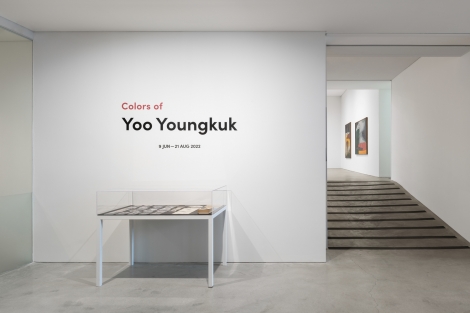
|
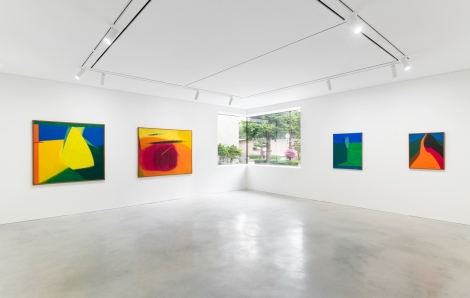
|
|
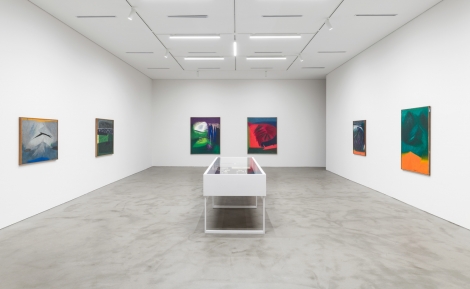
|
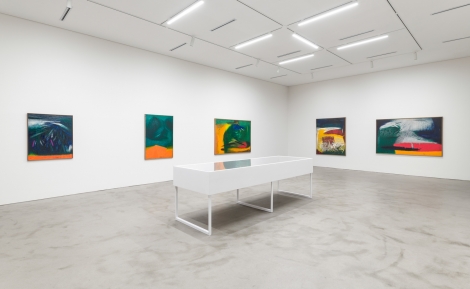
|
|
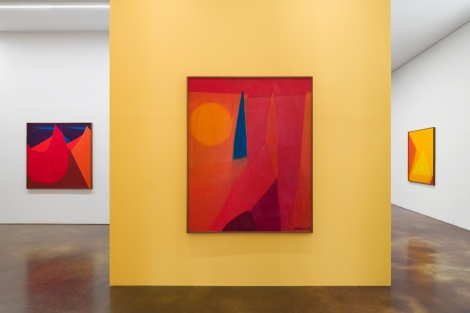
|
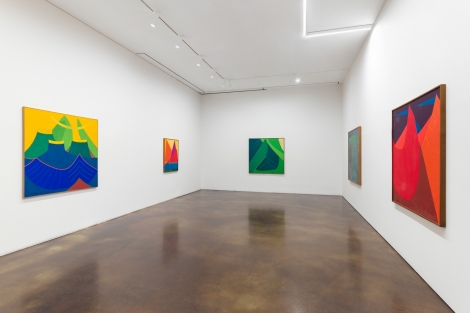
|
|
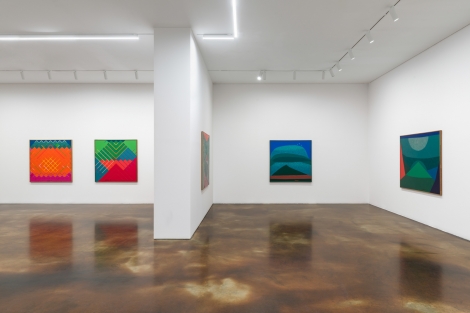
|
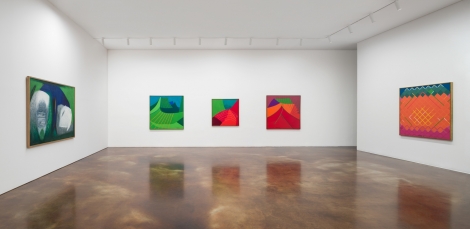
|
|
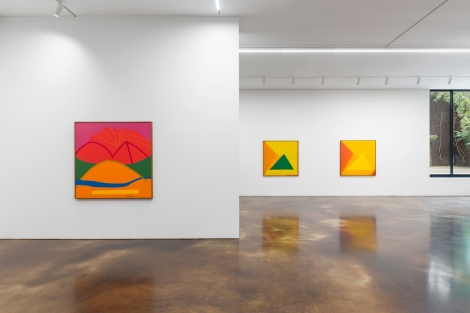
|
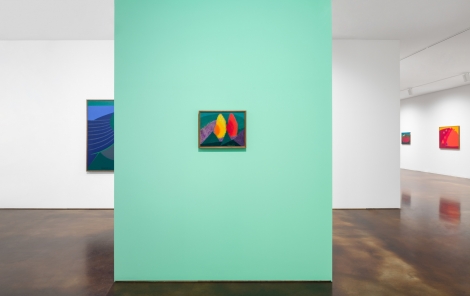
|
|
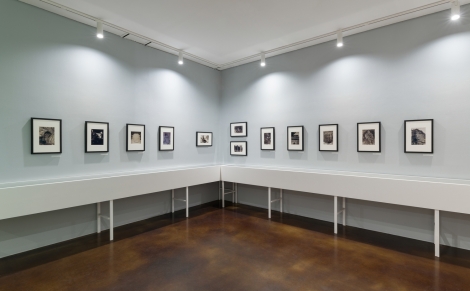
|
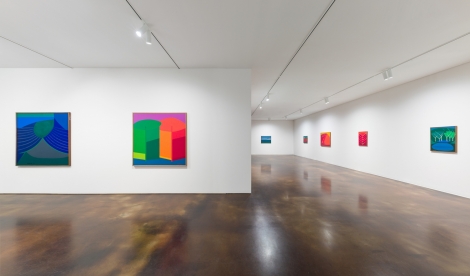
|
|

|
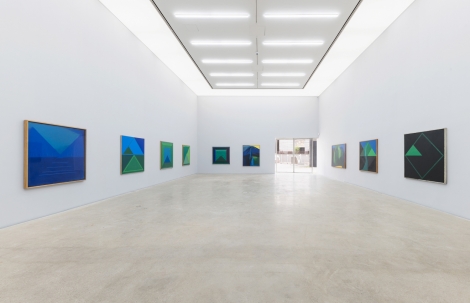
|
|
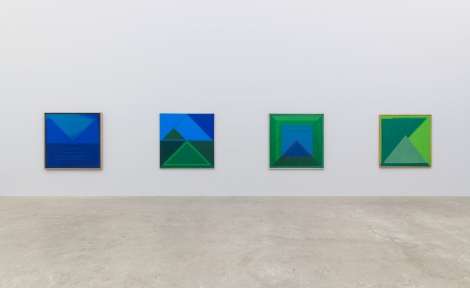
|
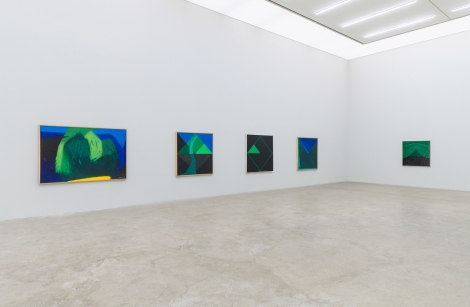
|
|
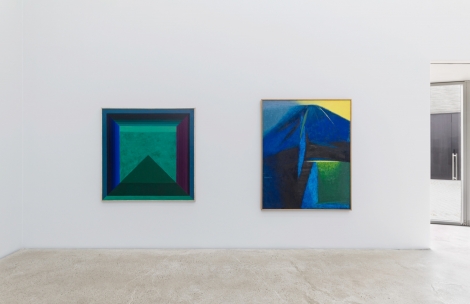
|
VIDEOS
|
Installation Video |
Virtual Exhibition |
|
|
Virtual Exhibition |
Virtual Exhibition |
|
|
Teaser Trailer |
MEDIA COVERAGE
일간지
월간지
주간지/웹
방송
